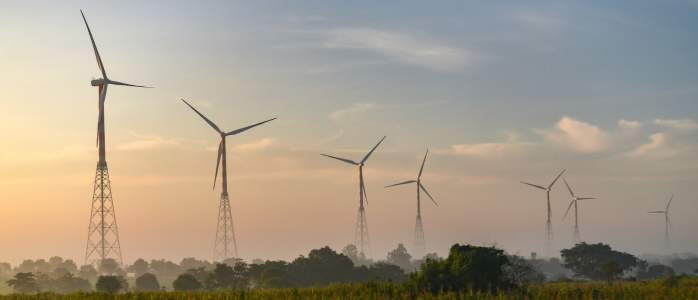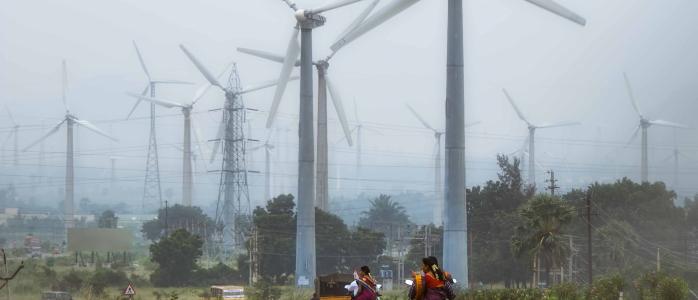



One of the major impediments to achieving India’s renewable energy (RE) targets has been a lack of coordination among various stakeholders in the sector. However, the Ministry of Power’s proposal to introduce a National Renewable Energy Policy (NREP) in the amendments to the Electricity Act, 2003, could iron out this challenge. The NREP could improve planning and coordination between various stakeholders and align the priorities of the Centre and the states. In this blog, we outline a framework to accelerate the pace of achieving India’s RE ambitions through NREP.
While RE is a strategic priority for the Centre, states do not accord the same importance to it. States can independently make policy and regulatory decisions on electricity matters. However, these are often inconsistent with the national policies and priorities. Since 2012, almost all RE-rich states such as Tamil Nadu, Andhra Pradesh, Gujarat, Karnataka, Rajasthan and Maharashtra have taken steps that have dampened investor confidence. These steps included retrospective changes to policies, threats to renege on existing power purchase agreements (PPAs), delayed payments to RE generators, and curtailment of power. These regressive actions demonstrate uncertainty and increase the risk perception in the sector.
It is a well-established fact that large-scale RE deployment has enormous benefits to offer. CEEW analysis shows that RE creates more jobs than conventional power, a major chunk of these being local. A high RE trajectory will result in significant emission abatement and huge savings on account of reduced energy imports.
Over the last three years, the generation costs of RE have declined significantly. Further, regulations allow for the transmission of power from a RE-rich state to any other state. Despite the obvious benefits, states have shown limited interest to either deploy or buy more RE power and meet the allocated targets. This is because they incur high costs for integrating RE generation with the grid. For example, when they dispatch RE in place of already contracted coal power, they must pay the RE tariff plus the fixed costs for the coal power not consumed. For inter-state procurement of RE, various charges are loaded onto RE tariffs which makes it unattractive against cheaper power available through existing contracts.
Therefore, the first step to encourage states to adopt the national RE targets is to account for all the costs, benefits, and co-benefits of doing so, followed by the identification of the bearers and beneficiaries of the costs and benefits across the value chain. Once these are known, the principles of cost and benefit-sharing can be established to ensure that states are motivated to meet the centre’s goals and objectives. States buying into national targets is necessary but not enough. It is also essential that there is constant alignment between central and state policies and actions.
The NREP provides an excellent opportunity to establish the above principles, and bring the states on board to ensure greater participation and wider markets for RE. However, we recommend that firstly, the amended Electricity Act specify the objectives, scope, implementation and the monitoring process of the NREP from the get-go. The central government, in consultation with the states, must notify this policy, once every five years. The first such policy must be notified within six months of the notification of the Act. The state governments too, once every five years and within a year from the notification of the Act, must prepare the state’s Renewable Energy Policy in consultation with the relevant agencies of the state and the central government.
Secondly, the NREP must specify a firm, uniform Renewable Purchase Obligation (RPO) trajectory and design directional targets for the subsequent years. All state RE policies must adopt the NREP trajectory in a technology-agnostic manner and have the freedom to choose the technology/clean energy mix for meeting the national trajectory. This will ensure that states align their ambitions and priorities with the national policy. For instance, if creating jobs locally is a priority, a state may focus on scaling up solar rooftop over another technology.
Thirdly, to adopt the framework highlighted above, all relevant actors will have to play new and additional roles and responsibilities. For instance, periodic reviews of the national and state policies would be required to internalise lessons from implementation experiences. Above all, coordination between players would be critical to the success of these policies. Therefore, it is recommended that a National Electricity Council (NEC) be constituted. This inter-ministerial coordination committee should convene quarterly and comprise senior representatives from central line ministries and their agencies and state governments. The NEC’s primary objective could be to monitor progress, discuss gaps and bottlenecks in implementation, recommend remedial actions, proactively suggest tools and mechanisms to ease planning, deployment, procurement and operations, and assess strategic opportunities for India to lead the energy transition.
These principles and approaches can strengthen the government’s commitment to mainstreaming renewable energy in the country. Adopting the above principles will also ensure long-term policy certainty critical to ensuring the flow of investments into the clean energy transition.
Disha Agarwal is a Programme Lead at CEEW and Rishabh Jain is Manager - Market Intelligence at the CEEW Centre for Energy Finance. Send your comments to [email protected] and [email protected]
Read Part 1: Separating Regulation and Adjudication Through a Proposed New Judicial Arm
Read Part 2: What Works and What Does Not in the Proposed Electricity Act Amendments
Read Part 3: Can the Amended Electricity Act Unlock More Private Capital for Renewables?
Read Part 5: Rethinking the Role of Institutions for Effective Policy Implementation in Power Sector






Add new comment